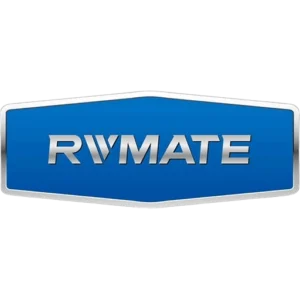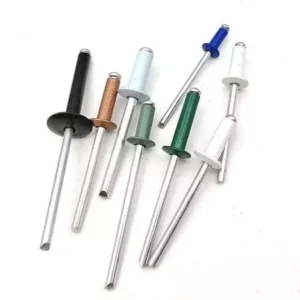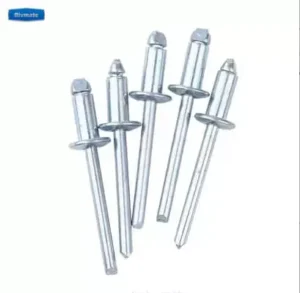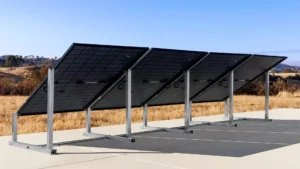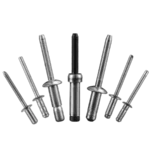Table of Contents

A wide range of fasteners and reliable connections are essential for the formation of a perfect building. riveting in construction is an important type of connection. riveting improves the efficiency of building installation.
This comprehensive guide shows you the role of riveting in construction, its history, types, usage scenarios, and how it compares to welding and bolting. Let’s find out more!
Table of Contents
Definition of Riveting and Its Role in Construction
Riveting is a mechanical process of permanently joining two or more components by means of rivets. Its core steps are:
- Drilling: Prefabrication of through holes in the parts to be joined.
- Insertion of rivets: Cylindrical metal rivets (usually steel, aluminum or copper) are threaded into the holes.
- Forming and fixing: through the riveting tool to make the tail of the rivet deformation (such as the formation of “nail head”), the use of friction and mechanical bite to achieve fastening.
Role of Riveting in Construction
A lot of rivets are used in construction to connect structures. So what role does riveting play in construction? Here are four main roles.
- High-strength structural connection: rivets are not easy to break when subjected to shear or tension, suitable for steel frames and other load-bearing structures. Moreover, riveted nodes are not easy to loosen under dynamic loading, so they are commonly used in railroad bridges, industrial plants and other scenarios that require seismic resistance.
- Durability and stability: Compared with welding, cold riveting process avoids changes in material properties caused by high temperature and maintains structural integrity.
- Specialized applications: Riveting connects metal to non-metal (e.g. metal to composite), expanding the possibilities for building design. The riveted connection is permanent. Prevent artificial disassembly and enhance safety (e.g. high-pressure containers, protective structures).
- Historical and restoration value: the riveting process is used in the restoration of old buildings to preserve their original appearance (e.g. 19th century industrial heritage). The exposed rivet head can be used as a decorative element to reflect the industrial style design.
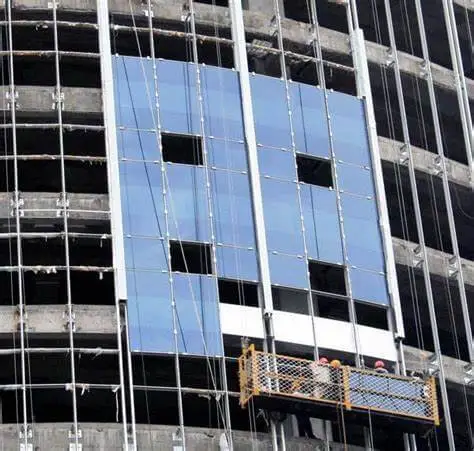
History of Riveting in Construction
The evolution of riveting technology, as one of the core processes of mechanical joining, is closely related to the innovation of construction materials and the changing needs of industry. The following are its key stages of evolution:
1. Ancient origins (3000 BC - 18th century)
In early applications, hand-forged copper or iron rivets were already present in ancient Egyptian and Roman times. These rivets were used for weapons, armor and simple architectural structures (e.g. chariots, ships).
Limited by metal smelting technology, the rivets of the time were small in size and low in strength, and were mostly used in non-load-bearing structures.
2. The period of the Industrial Revolution (19th century)
With the popularization of the Bessemer converter steelmaking method, steel production surged and demand for large steel structures such as railroads, bridges and factories exploded, making hot riveting technology mainstream.
Iconic projects include the Eiffel Tower and the Brooklyn Bridge. Workers heat the rivets to a red-hot state, insert them into the holes and then hammer them into shape with an air hammer, relying on a great deal of human collaboration.
3. The Golden Age (early twentieth century - 1940s)
With the rise of the skyscraper, riveting became popular. Early steel buildings such as the Chicago Home Insurance Building (1885) relied on riveting, creating a “steel skeleton” construction pattern.
4. Modern innovations (1980s - present)
Today, hot riveting has evolved to cold riveting & automation. Hydraulic/pneumatic riveting machines are used without heat, and the rivets are molded by high pressure to improve efficiency and safety.
And blind rivets one-sided operation can be completed connection, widely used in curtain walls, lightweight steel structures (such as airport terminals).
Do You Have Any Questions?
Let Us Solve Your Problem
Types of Rivets in Construction
In the construction industry, the selection of rivets needs to be optimized based on structural requirements, material properties and construction conditions. The following are common types of rivets and their application scenarios:
Solid Rivets in Construction
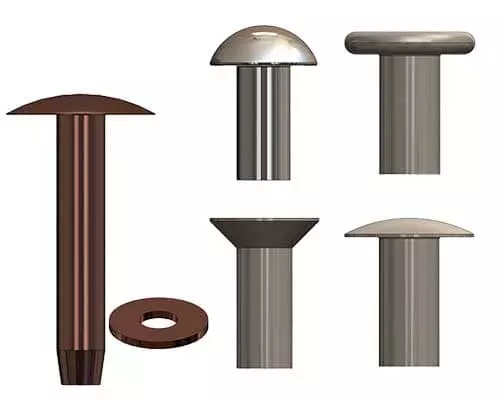
The structure of solid rivets is characterized by a single metal (steel, aluminum, copper, etc.), no hollow structure, need to be fixed by heating or cold pressing deformation.
Solid rivets are often used in heavy steel structures. For example, bridges, high-rise building steel beams, industrial plant load-bearing nodes. Its advantages are high shear strength, fatigue resistance and long life; the disadvantage is that it requires double-sided operation and complex installation.
Blind Rivets (Pop Rivets) in Construction
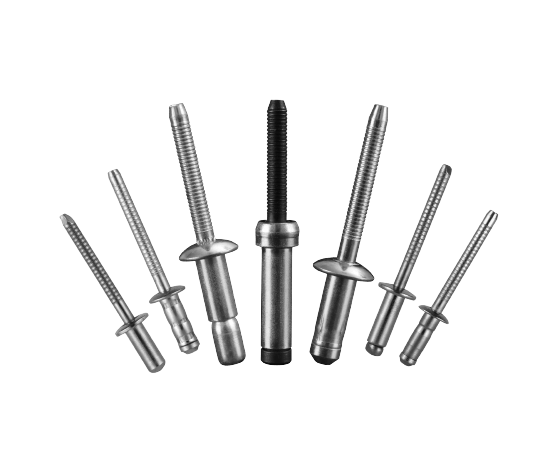
The structural characteristics of the blind rivets (pop rivets) are that the mandrel at the end of the installation will be pulled off, and the entire installation process can be completed with only one side.
In the construction field, aluminum curtain walls, ventilation ducts, temporary supports, metal ceilings and partition links will use a large number of pop rivets for installation.
The biggest advantage of blind rivets is that they are very easy to install, do not require double-sided operation, and are ideal for tight spaces.
Self Piercing Rivets in Construction
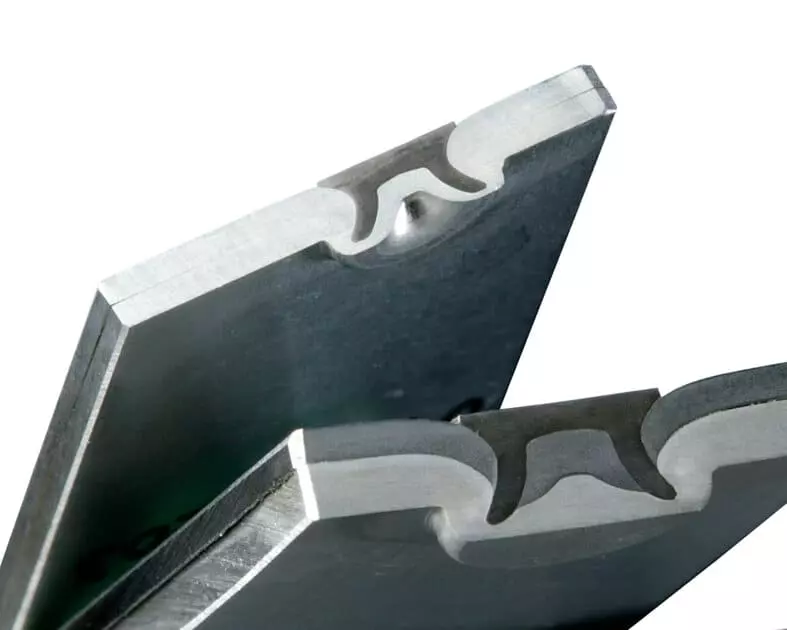
Self piercing rivets (SPR) are installed without pre-drilling, penetrate the material and deform and lock, Self piercing rivets are often used in construction to install aluminum-steel hybrid structures (e.g. lightweight building modules). Some assemblies, such as the quick connection of prefabricated wall panels to frames, are also installed with SPR rivets.
The advantages of self piercing rivets are that they are highly efficient, have fewer processes and are ideally suited for fully automated production.
What are Rivets Used for in Construction?
Rivets are widely used in construction due to their high strength, vibration resistance and durability. The main applications of using rivets in construction are as follows:
- Structural steel buildings
- Bridge construction
- Space structures and large venues
- Curtain walls and enclosure systems
- Assembly and modular construction
Specific application scenarios for riveting
- High-rise buildings and skyscrapers: The connection nodes between the core and the external steel structure of ultra-high-rise buildings require the use of large-diameter high-strength rivets to withstand dynamic loads.
- Industrial plants: Steel roof frames and crane beams of heavy machinery plants are fixed by rivets to avoid thermal deformation caused by welding.
- Railroad and highway bridges: Anchorage points of large-span suspension bridges and steel box girder splices are fastened with corrosion-resistant rivets to resist the erosion of humid environments.
- Pedestrian bridges: blind rivets are used at the connection nodes of light steel structures to facilitate quick on-site installation.
- Stadiums and exhibition centers: the curved metal roofs of airport terminals have aluminum panels and steel frames connected by stainless steel blind rivets, taking into account both lightweight and wind resistance.
- Metal curtain walls: aluminum composite panels, titanium and zinc curtain walls are fixed with aluminum blind rivets, one-sided operation to adapt to overhead work, and the rivet color can be matched to the plate.
- Glass curtain wall support structure: steel keel and connectors are fixed by anti-loosening rivets to ensure that they will not be loosened by vibration in long-term use.
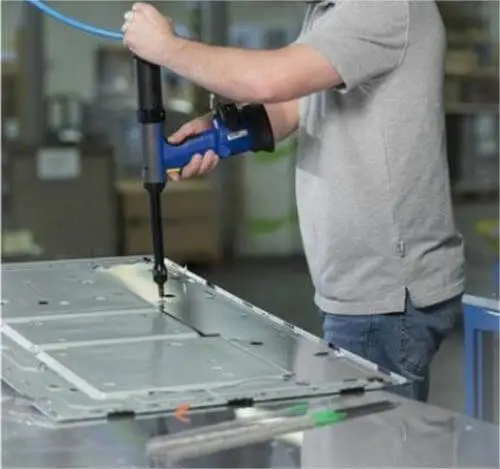
- Prefabricated Concrete Component Connection: The steel prefabricated components of the assembled building are quickly connected to the concrete slab by self-piercing rivets, reducing the on-site welding process.
- Container house: The reinforcement nodes between container modules use high-strength rivets to enhance overall stability and adapt to frequent lifting and transportation.
Do You Have Any Questions?
Let Us Solve Your Problem
Riveting vs Welding vs Bolt : Construction
| Comparison Factors | Riveting | Welding | Bolted Connection |
| Connection Method | Mechanical fastening, forming a permanent connection through rivet deformation | Uses high temperature to melt and fuse metals, forming a weld joint | Mechanical fastening using bolts and nuts to clamp materials together |
| Applicable Materials | Steel, aluminum, stainless steel, and other metals | Mainly used for metals (steel structures), some plastics | Steel, aluminum, embedded concrete components, etc. |
| Strength and Durability | High strength, fatigue-resistant, suitable for high-vibration environments | Highest strength, suitable for heavy structures | Relatively high strength but may loosen due to vibration |
| Longevity | Suitable for long-term structures, minimal temperature impact | May experience fatigue due to heat-affected zones | Easy to replace and maintain, but threads may loosen or corrode |
| Construction Process | Requires pre-drilling and riveting equipment, complex installation | Requires high-temperature operation, highly affected by environmental conditions | Simple installation with bolts, nuts, and wrenches |
| Removability | ❌ Not removable | ❌ Not removable | ✅ Removable and maintainable |
| Typical Applications | Bridges, high-rise buildings, metal structures | Steel structures, pipelines, pressure vessels, large buildings | Prefabricated structures, replaceable connections, temporary structures |
| Main Advantages | High strength, vibration-resistant, suitable for high-load connections | Highest strength, no additional fasteners needed | Easy installation and maintenance, can be disassembled and replaced |

Conclusion:
- Riveting: suitable for bridges, building steel structures, high strength permanent connections.
- Welding: suitable for steel structures, large buildings, pipelines, highest strength but more difficult to maintain.
- Bolting: suitable for demountable, prefabricated and temporary structures, easy to install and maintain, but may loosen in long-term use.
Custom Riveting Solutions for Your Construction Project
riveting in construction is a good way to address this. If you want to greatly improve the efficiency of your installation, rivets can fulfill that condition.
With this guide, I’m sure you already know how to choose the right riveting method for your construction projects. If you are still not sure, please contact our engineers and you will get the perfect riveting solution.
